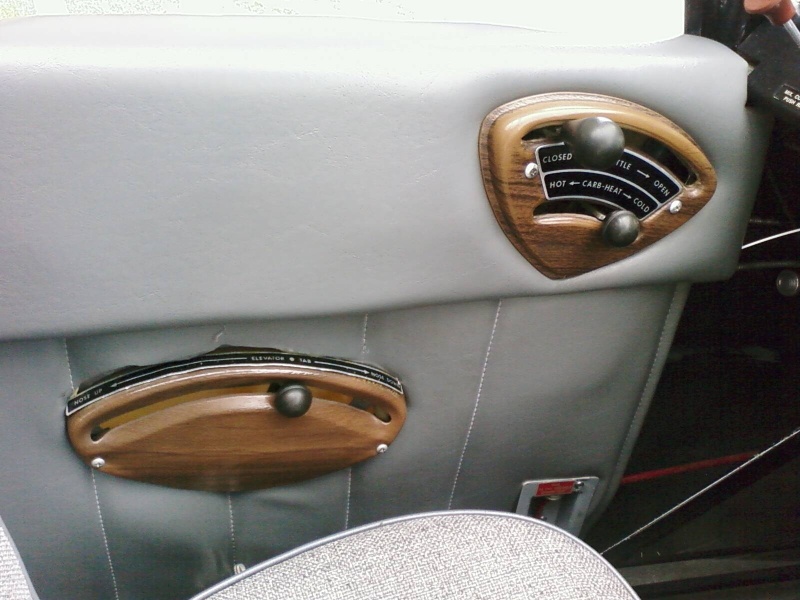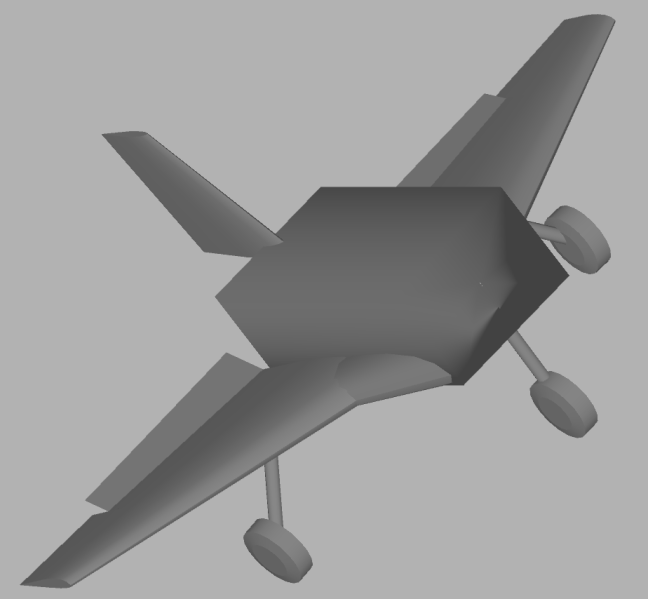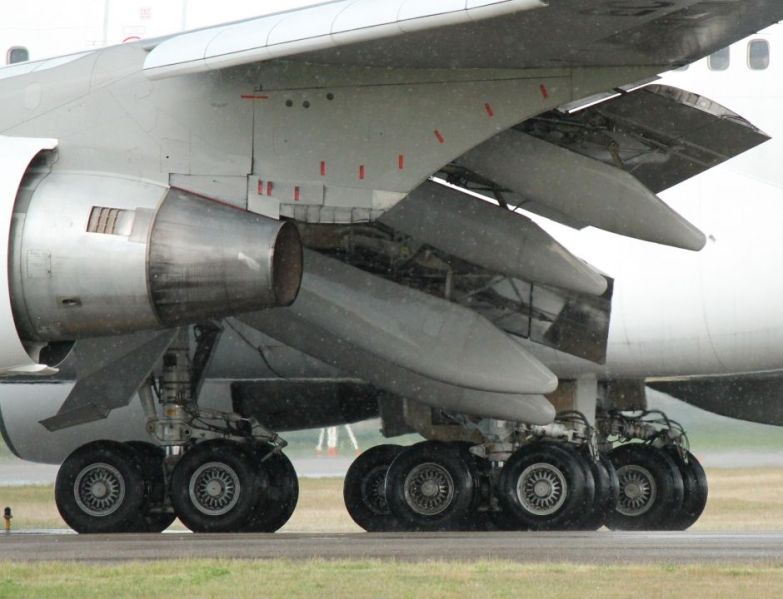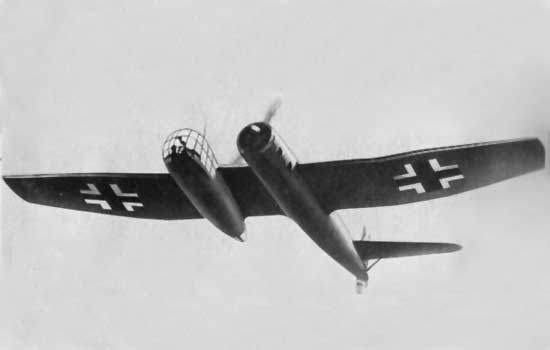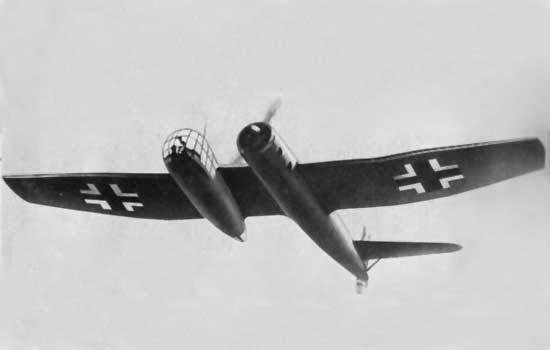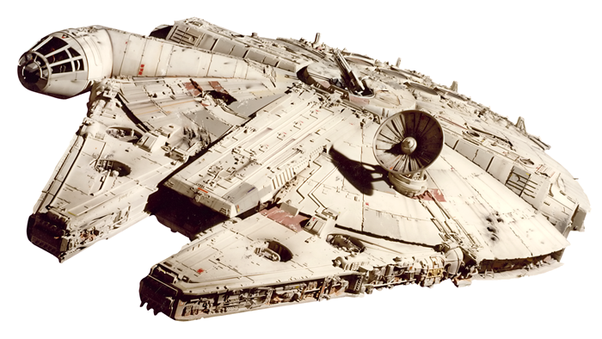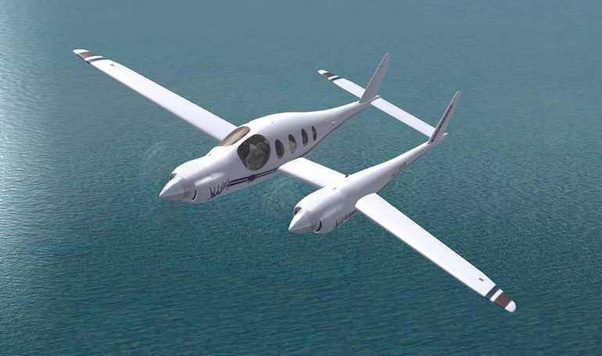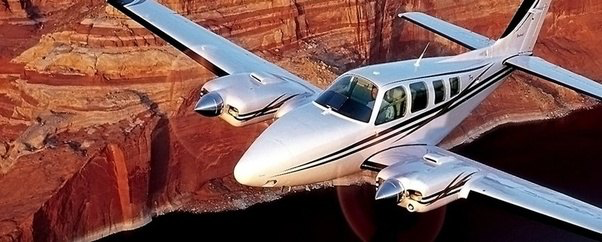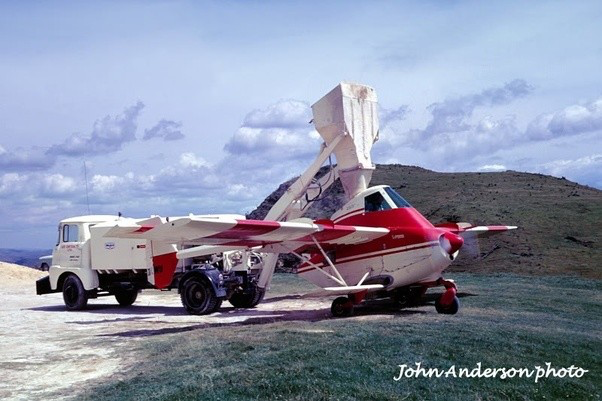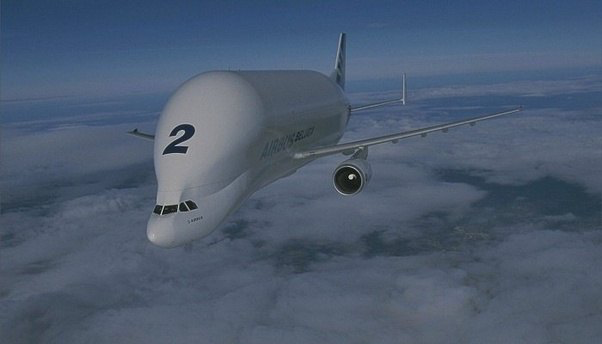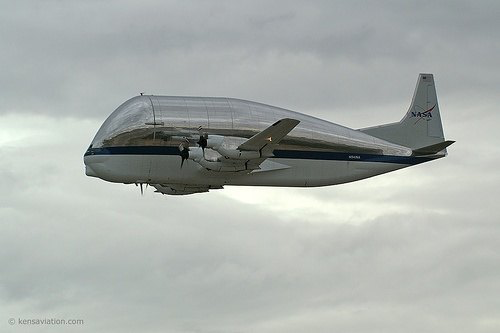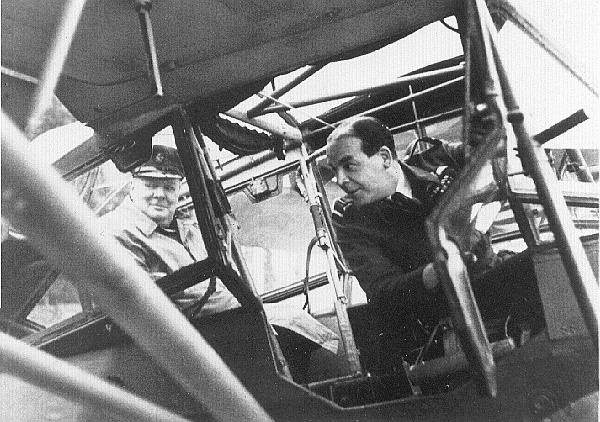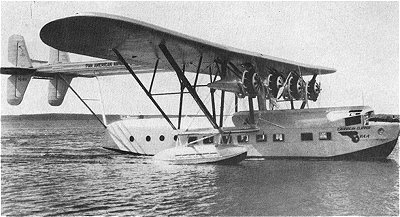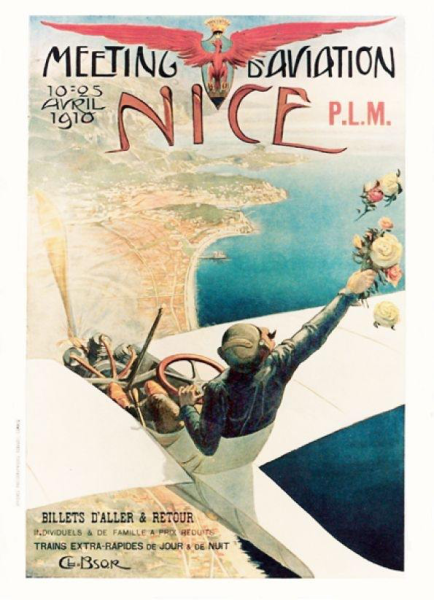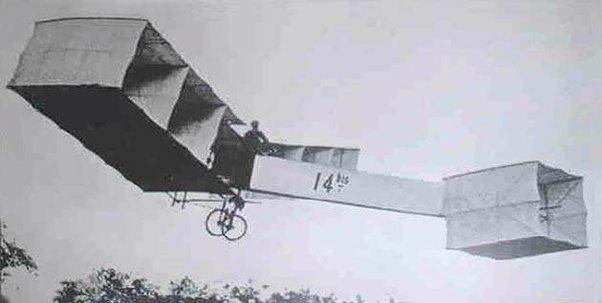This answer is an expanded version of my presentation “Falling With Style: An Intuitive Introduction to Aerodynamics, With Bricks” from Skepticamp Sydney 2012. I’m assuming that it’s ok to introduce new terms, as long as I explain them in layman’s terms first. I’ve marked the key, major principles in italics.
Consider a typical house brick brought into existence for our amusement a few hundred kilometres above the Earth’s surface, outside the atmosphere. It immediately starts falling due to its weight, one of the four key forces considered in aerodynamics. The brick will fall faster and faster until it hits something – above the Earth the first thing it will hit is the atmosphere.
The gas molecules hitting the front of the brick exert a force directly opposing the direction of travel of the brick, which is proportional to the mass of the gas hitting the brick, times the square of the speed of the brick. For example, if the brick falls into a lower, denser part of the atmosphere where two gas molecules are hitting it every second instead of one, or perhaps it falls sideways intercepting twice as many molecules as it does end-on, the force doubles. However if the brick doubles its speed still hitting just one gas molecule a second it feels four times as much force trying to slow it down.
This force is called drag, the second key force of aerodynamics. As the brick approaches the lower, thicker parts of the atmosphere its weight remains the same, but the drag increases until it balances the weight, and the brick settles at a speed called the terminal velocity. According to my flight simulator this is about 250 kilometres an hour for a brick, which is the speed it’s travelling at when it hits the ground.
On my flight simulator if I look at the path through the air left by the brick it has some gentle wiggles in it where it seems to have travelled slightly sideways instead of straight down. Looking closely at the replay it seems that this happens when the brick is oriented at a small angle to the onrushing wind – the brick is deflecting some gas molecules to the sides, and when more of them are deflected to (say) the north, the brick ends up going a bit south. The force an object can generate at right angles to its direction of travel through the air is our third key force (and the most important and interesting one), lift.
Like drag, lift is proportional to the mass of gas hitting our brick times the square of the speed, so you’d think with all this air hitting brick surfaces at speed there should be plenty of lift. However the reason that the wiggles in our flight path are so small is that lift is very sensitive to the shape of the object and the angle at which it’s hitting the air, and in the case of a brick, the shape is absolutely rubbish for generating lift. Or to be more precise, it’s rubbish for generating lift without generating even more drag.
You don’t get something for nothing – lift always goes hand in hand with drag. What we need to escape our vertical plummet from space is a shape that gets lots of lift for very little drag, something with a higher lift-to-drag ratio (L/D). If you had a shape that could generate 10kg of lift for a 1kg increase in drag, you’d have a L/D of 10, and by one of those very elegant and pleasing bits of universe maths you’d find that for every metre of height that you lost, you could glide 10 metres sideways at a constant speed. The drag caused by generating lift is called “induced” drag (the drag we have to have), and the original drag that slowed us down to terminal velocity is called “parasite” drag (the drag we try to get rid off with streamlining). In the case of our brick we have oodles of both, and our L/D will be way less than 1 – getting us a very steep and not particularly recognisable “glide”.
Imagine that we can transform our brick back to clay, squish it into a shape (keeping all the bits and the same total weight), and then bake it back into brick form. Suppose at one point we arrived at a streamlined shape like a paper dart but with very short, stubby wings. The leading edge of the wings are rounded and the trailing edge of the wings are sharp, so that if we sliced through the wing it would have a teardrop cross-section, perhaps eight times longer than it was wide.
Firstly while falling vertically and not trying to generate lift we’d find that we had reduced parasite drag a lot through streamlining, and consequently our terminal velocity would be somewhat higher – not too much, because the drag increases a lot more with speed than it decreases by not hitting the air head-on (which is what streamlining is basically about).
More excitingly we’d find that we had a L/D above one which allowed us to descend at an angle of less than 45 degrees at a constant speed. However as we lifted the nose to try and extend our glide (did I mention this was a radio-controlled brick? More about changing direction below) we’d find that we slowed down very quickly. As we slow down the angle our brick-dart nose is raised into the oncoming air (called the angle-of-attack or AoA) to keep generating enough lift will rise rapidly, and with it the induced drag, slowing us down even more. Eventually at perhaps 30 degrees on our dart the air would suddenly give up trying to follow the shape in a way that generated lift, and our dart would “stall” – essentially returning to sideways-falling-brick mode with no lift until the nose could be lowered to an AoA small enough to start generating lift again. If we’re not high enough when this happens to recover our speed and AoA, or we can’t bring ourselves to counter-intuitively lower our nose while falling we’re going to hit the ground – like a brick.
If this sounds dangerous it is – for hypothetical bricks, and real aircraft. Far, far too many aircraft and people are lost in tragic accidents involving stalls – recent examples include Air France 447 and (as far as I can tell from the video footage) the recent ATR72 crash in Taipei. It’s deeply frustrating to the aviation community because so much pilot training is devoted to avoiding, recognising and recovering from stalls (or even worse “spins”, where one side of the airplane stalls before the other) and yet it still happens.
Back to moulding our brick. As we stretched out the wings to each side to pass through more air, all other things being equal we’d find our L/D increasing – it turns out that for lift it’s more efficient to deflect a lot of air a little bit, than it is to deflect a little bit of air a lot. At a L/D of 4.5 we’d have something similar to the Space Shuttle Orbiter, the world’s most awesome one hundred ton glider. On the way back from space the wings are initially used at high AoA for massive induced drag to slow down from orbital velocity while the lift is used to aim at the destination. Approaching the runway the Orbiter needs to descend in a steep dive to maintain speed, but critically the L/D is high enough that when the Orbiter flares (levels out almost parallel to the ground a few seconds before touchdown) and starts decelerating from the increasing drag it has enough time to get it its wheels on the ground before it runs out of lift.
The same will apply to our brick – if we dive at the ground to keep our speed up and time our flare just right, we can arrive on the runway at a low enough descent rate to skitter across the numbers without shattering and slide along the tarmac, eventually scraping to a stop in a shower of brick dust. How much room we need to stop depends on how fast we’re going when we land. Ideally we’d like this to be as slow as possible to use shorter runways and scrape less clay off our undersides each time we arrive somewhere. The slowest speed we can fly at is the speed at which our brick stalls, but we can’t work this out using just the L/D.
Our brick is currently shaped like the Space Shuttle, but it’s still solid clay and not much larger than an unmodified brick. It is going to have a stall speed well over 100 kilometres per hour and probably need a few hundred metres of runway to stop. Lets say we make it hollow, and keeping the shape and total weight, scale it up so that it’s maybe a metre long. There is a lot more surface area hitting gas molecules to create lift and drag, and we’d find that our stall speed was much lower, because each patch of wing surface has much less weight to generate matching lift to support. The amount of weight supported by each patch of the wing surface is called the wing loading, and it’s measured in kilograms per square metre or pounds per square foot.
Hang gliders and paragliders have low wing loadings around 2-3 pounds per square foot because they’re foot launched and the stall speed has to be below a human’s maximum running speed for launch and landing. Typical light aircraft have wing loadings around 10 pounds per square foot, stall at freeway speeds and can comfortably operate from runways 600-900m long. Jet airliners have wing loadings up to 90 pounds per square foot, stall at racing car speeds and need runways over 1500m long.
One of the funny things about wing loading is that it doesn’t affect L/D. If you have a L/D of 10 then you can glide a kilometre from a 100m height. If your wing loading increases because you’re carrying more weight, then you can still glide a kilometre from a 100m height, you just do it faster.
Why don’t all aircraft have giant wings then, so that they can land on a dime? Well, firstly wings are heavy, and secondly if you want to go fast those big wings will cause a lot of drag (which increases with the square of the speed, remember). This is one of the challenges of aircraft design: aircraft with big differences between the stall and maximum speeds are hard to design.
One of the ways designers get aircraft to do both is to have a wing that can change its cross-sectional shape. Remember our thin teardrop? If we get it to arch its back so that it looks more like a comma, we find that the amount of lift (towards the “stretched” side of the comma) and drag it generates increases, all other things being equal. This is called camber, and most aircraft wing shapes have some built in. Furthermore, by hinging the thin tip of the teardrop and moving it down and up with cables or motors we can respectively increase and decrease the lift of the wing, partly due to changes in camber and partly because (if you imagine a line from the front of the teardrop to the deflected pointy end) you can see that the AoA has also been changed by the deflection, and as noted earlier AoA determines the amount of lift generated.
Flaps are sections of the back of a wing that are deflected down during landing and takeoff to increase the lift of the section of wing they’re attached to. With the lift comes increased drag, which is actually useful for landing because it lowers the L/D, which allows you to come in at a steeper angle (to clear a line of trees, say) without speeding up, and then to come to a stop more quickly on the ground. Because of the increased drag full flap is usually used only for landing.
Flaps are only one of hinged “control surfaces” that you find on the pointy, trailing edge of a wing. Further out on the wings of a typical aircraft you’ll find a pair of surfaces called ailerons that act in opposition (one down, one up) to change the lift of the wings, rolling the aircraft to the left and right.
By the way you’ll always find the flaps closer to the centre of the aircraft than the ailerons, because when they’re deflected they increase the AoA of their bit of the wing, which means that if the wing stalls, the flapped bit of the wing will stall first. If you’re going to loose a chunk of lift suddenly (think of a person jumping off a see-saw) you don’t want it to happen out at the tips of the wings, because that would cause a sudden violent roll towards the wing that lost the lift – the pilot might try to pick up the falling wing with the aileron, which would increase the AoA and stall that wing even more, setting things up for a spin…
This is the wonderful thing about aircraft design – it’s the ultimate form-follows-function style of engineering, and everything is the way it is for a very good reason.
On the horizontal tail you’ll find the elevator, which increases and decreases the lift of the tail to pitch the nose of the aircraft down and up. On a dart shaped aircraft like our brick with no separate tail, the responsibility of the aileron and elevator controls are shared by a pair of “elevons” that move together to control pitch and in opposite directions to control roll.
Finally on the vertical tail fin you’ll find the rudder, which is used to move the nose of the aircraft left and right, but perhaps counter-intuitively not to make large changes in direction. This is done by rolling the aircraft in the direction we want to turn, so that the much larger lift force generated by the wings can be used to start moving us in that direction. The rudder is used more to balance out the drag caused by aileron deflections; pick up a falling wing safely if we’re near a stall, and when we need to fly a bit sideways (landing in a crosswind or impressing people with some aerobatics).
Let’s reshape our brick to look like a light aircraft (L/D around 10) and add all the control surfaces we’ve just talked about. Now lets adjust how it’s hollowed out so that the tail is very heavy, so that if we were to hang it from a string attached to a point somewhere behind the wing it would balance in a level attitude. This point is called the centre of gravity (CoG). If we drop this brick we’ll find that despite everything else we’ve done it just falls backwards or tumbles out of the sky. If we move the CoG to say half way between the front and back of the wing we might find that we can only just control the plane but it’s very twitchy, unstable, and tiring to fly, although perhaps if we had a computer to help us react quickly it would make a very agile aircraft. When the CoG moved to about a quarter of the way from the front to the back of the wing we’d find the plane much more stable, but as we moved the CoG further forward we’d find it hard to raise the nose using the elevator, and eventually we wouldn’t have enough control authority to stop it diving nose-first to earth, like our original brick.
Balance is critical to an aircraft. All aircraft have an allowable range of positions for the CoG, which has to be preserved throughout each flight. Variable weights like fuel, cargo, crew and passengers need to be positioned close to the front of the wing, because like a person standing on the middle of a see-saw they don’t affect the balance point as much when they jump on or off. This is why fuel storage in wings is so popular, and in classic record-breaking single seat aircraft the pilot sat behind the fuel tank further from the wing, the designer assuming that if the pilot was no longer in his seat there was not much point trying to balance the plane any more. The range is very narrow for aircraft with narrow wings (e.g. Gliders) or small/no tails (flying wings) and bigger with broad wings and large tails further back from the wings (e.g. military transports). Aircraft that depend on agility such as fighter jets are now designed with CoGs so far aft that they cannot be flown without computer support.
If we keep refining our brick to minimise drag we’ll wind up with something looking like a graceful, high performance glider, with a L/D of 50:1 (yes, from 100m you could glide 5km, which is incredible). If you could find some hills or mountains with some wind blowing over them, or on a hot day spot a circling hawk in a rising bubble of warm air you could find yourself gliding downwards through air rising faster than you are descending, and you could stay airborne for hours, climb to great heights and travel hundreds of kilometres. But unless you can land back on a hill with room to take off, at some point you are going to be stuck sitting on the runway with no-one to push you.
I have deliberately held back from talking about the fourth and final key force, thrust, because as you can see there’s a lot of interesting aerodynamics stuff going on without it. Basically we can use thrust to augment or cancel out any of the other forces to make our aircraft go where we want it to go, but most commonly it is used to counter it’s arch enemy, drag.
Consider our high performance glider brick. It’s almost flying level, so let’s raise the nose and try to fly level. Because there is still a tiny bit of drag we will start to decelerate, and eventually we will suffer the same fate as our stubby dart and stall, but probably minutes instead of seconds from now, and at a lower AoA around 16 degrees, which is typical for most aircraft with proper recognisable wings. If we could just grab hold of some passing air and throw it backwards we might be able to push ourselves forward to counter the drag and keep flying for ever.
A propeller is really just a wing flying around in a circle, generating lift and drag. The drag is trying to stop the propeller turning, so we use the power of an engine to keep it going. The lift is trying to pull the propeller off its shaft, so we attach it firmly to the engine, attach the engine to our aircraft and the lift becomes thrust to pull our aircraft along in the direction of the propeller shaft. The tips of the propeller are travelling a lot faster than the parts closer to the shaft, in fact the inner 25% or so of the propeller is going so slowly that it generates very little lift and is often covered in a streamlined “spinner” to reduce drag. Each part of the propeller is optimised to meet the oncoming air at an AoA that gets the best L/D, which is how propellers get their beautifully sculpted and twisted shapes, first worked out by the Wright brothers. Aircraft with a wide speed range normally have propeller blade angles that can be mechanically adjusted, for much the same reason that a car has gears – lots of power at low speeds for takeoff, and the ability to cruise without over-revving the engine. At lower speeds the radius of the propeller is important too – big propellers are more efficient at lower speeds, the ultimate example being a helicopter rotor. This is why the Mythbusters (thankfully) couldn’t get airborne in that terrible twin-ducted-fan deathtrap in an early series, when there are perfectly ok ultralight helicopters getting airborne using the same engine they were using.
Thrust can also be delivered by jet turbines and rockets. Both are terrifically light and powerful, but also rather expensive, and in the case of rockets, scary.
Efficient aircraft with high L/D need very little power to remain airborne, which is why record breaking long range and human powered aircraft look like gliders – the first to save fuel, and the second because people make really, really terrible aircraft engines. Any excess thrust left over from resisting drag can be used to accelerate the aircraft or make it climb higher. As the L/D gets worse we need more and more power to stay airborne, to the point where we arrive back at our original brick hanging underneath a helicopter rotor and going wherever it damn well pleases.
That’s a first draft – if people are interested I can add some more diagrams and pictures. Happy to accept corrections and comments.
